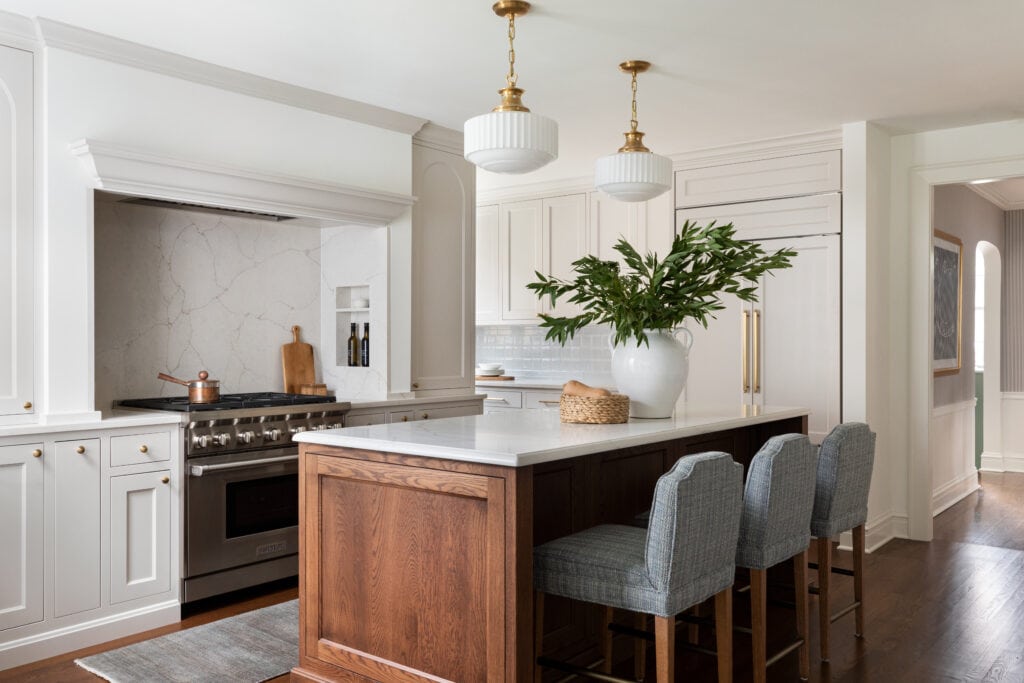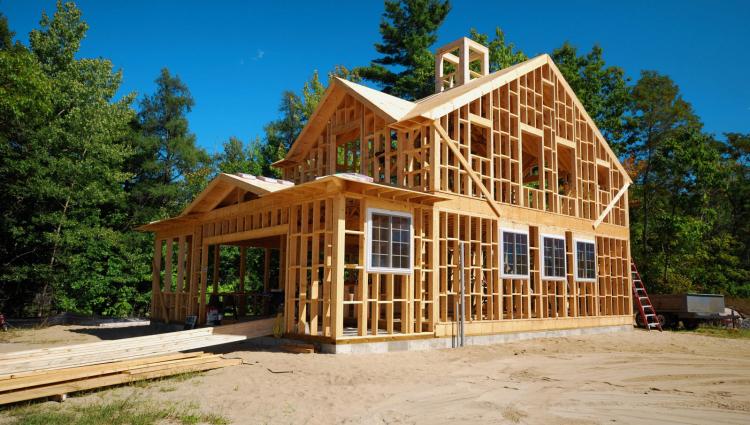
A range hood is a necessary part of any kitchen you’re planning to do a lot of cooking in. Besides sucking up food odors and preventing your house from smelling like whatever you’ve made for dinner for hours, a range hood can be a focal point of the space, adding style and flair to your kitchen. Here’s what to know about range hood ideas before choosing one.

@amberinteriors
Picking a Range Hood that Fits Your Space
There’s much to consider in selecting a range hood that’s equal parts functional and fashionable.
First, look at the proportions. A common design challenge with a range hood is that, functionally, they need to sit 30-36 inches above the range. Depending on your ceiling height and the width of your range, that can make the overall size of your hood quite large! While a range hood can be a nice statement piece, you don’t want it to feel too heavy and completely take over your kitchen.
A good way to avoid this: Have the hood vent out the wall, rather than extending it to vent out the ceiling. This way, you can have a design that tapers at the top or front, rather than just a large rectangular block, making it feel lighter.
Range Hood Ideas for Every Kitchen
Beyond the size consideration, contemplate the actual style you’re going for. A few favorites of ours:
- Metal range hoods: A very classic, vintage feel that will stand the test of time; can also skew industrial
- Wood-paneled range hoods: A bit more transitional but forever a classic
- Drywalled range hoods: Modern and clean, especially with stone or tile added, but can look historic when built into an alcove
Keep in mind that each type can be crafted to look more modern or traditional, depending on how you execute the details. View some of our favorite inspiration boards filled with range hood ideas here.

Functional Considerations for a Range Hood
The less-sexy side of a range hood is how it works to remove food smells from your home. Modern hoods are moving toward a setup where the hood blower (the actual piece that sucks up air and grease) is built into a drywalled box, and the hood element (tiled, stone, plastered, metal) is installed on top.
Hood blowers are measured by the air they can move or exchange in terms of cubic feet per minute (CFM). The higher the CFM, the more powerful it is. If you are cooking frequently and often use multiple burners at once, having a higher CFM is advisable. This will ensure all fumes are vented outside your home and not pollute the air in your kitchen. The size of your kitchen will determine the precise CFM you need, but 600-1,200 CFM is a good general range. Learn more about CFM here.
Be sure to educate yourself on the appliance specifications unique to your area. Different regions will have varying requirements to ensure your project is safe and up to code.
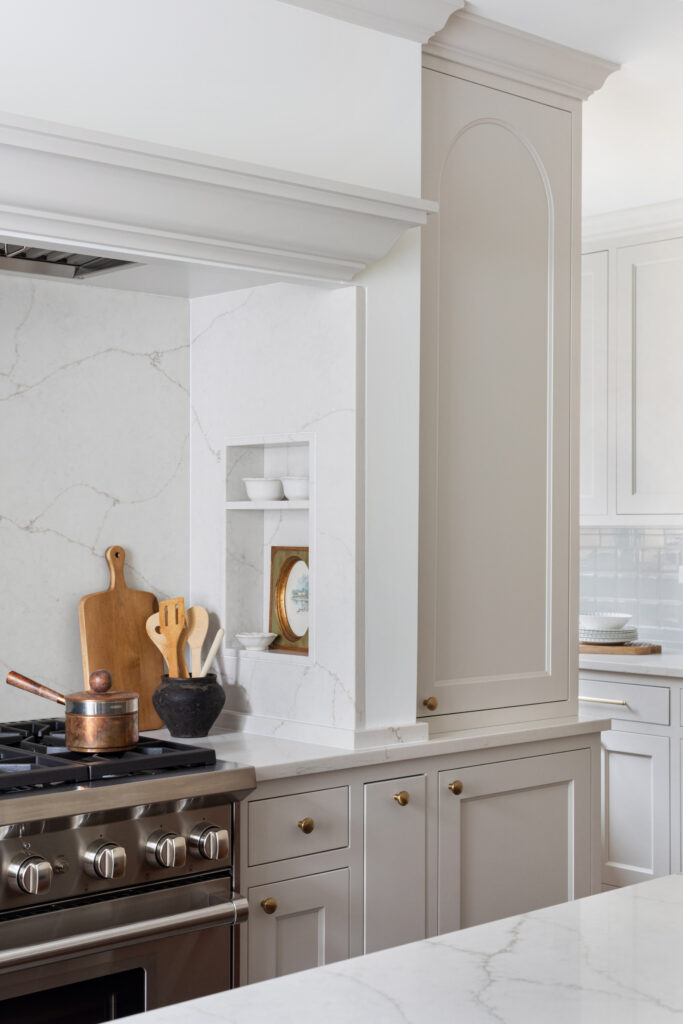
What to Know About Different Range Hood Styles
Metal Range Hood
Metal range hoods are usually stainless steel. Details like rivets or grommets can be made of many different metal finishes (polished or satin brass, polished nickel, matte black, etc.) that lend a more vintage or a more industrial feel. Because your finish will be different from the surrounding wood cabinets, this puts great emphasis on the hood. Be careful to not let the scale become too overwhelming for the space. Purchasing a metal hood that matches your range is the simplest route to go, but interior designers can help create custom hoods.
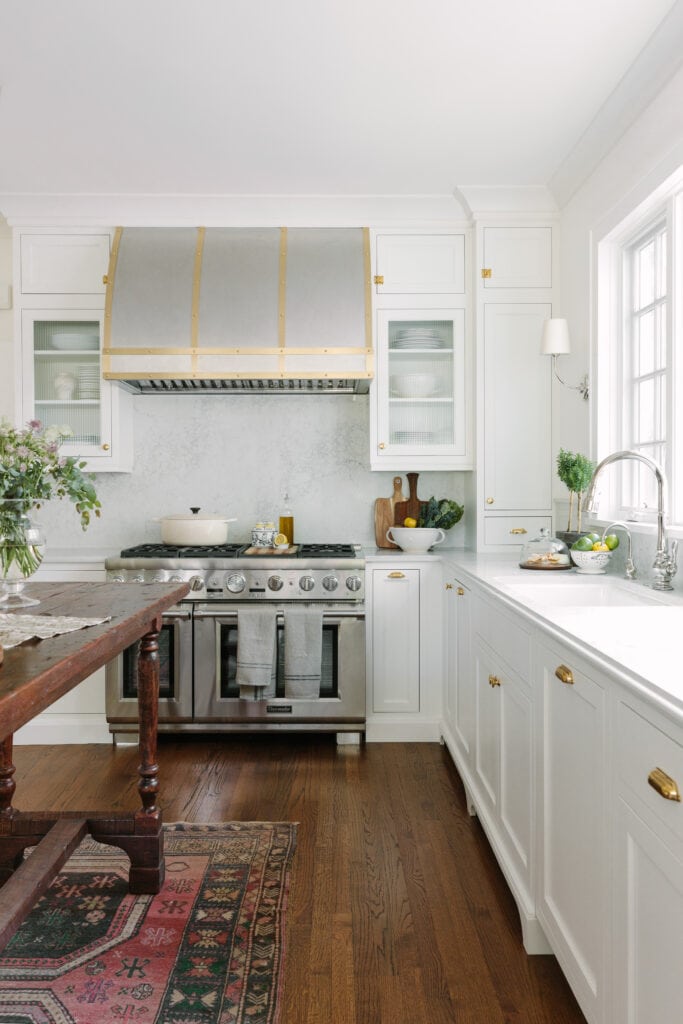
Wood Range Hood
If you’re doing a custom kitchen, these are typically built along with the rest of the cabinets to ensure the finishes and profiles match. You can also purchase wood hoods (also known as paneled hoods) individually online, finished or unfinished. Before you buy, take note of your hood blower insert and make sure it will fit safely inside your pre-built hood.

Drywall Range Hood
Built out of the same drywall material as your walls, these hoods will have a hood blower installed inside. They’re often painted with special treatments or plasters to emphasize their look. This is the type you’re seeing in California-style homes often, with a rustic looking “beam” across the bottom. Work with your builder if you’re going for a drywall hood, as they will need to build this in the construction phase. Your appliance vendor can then install the blower.
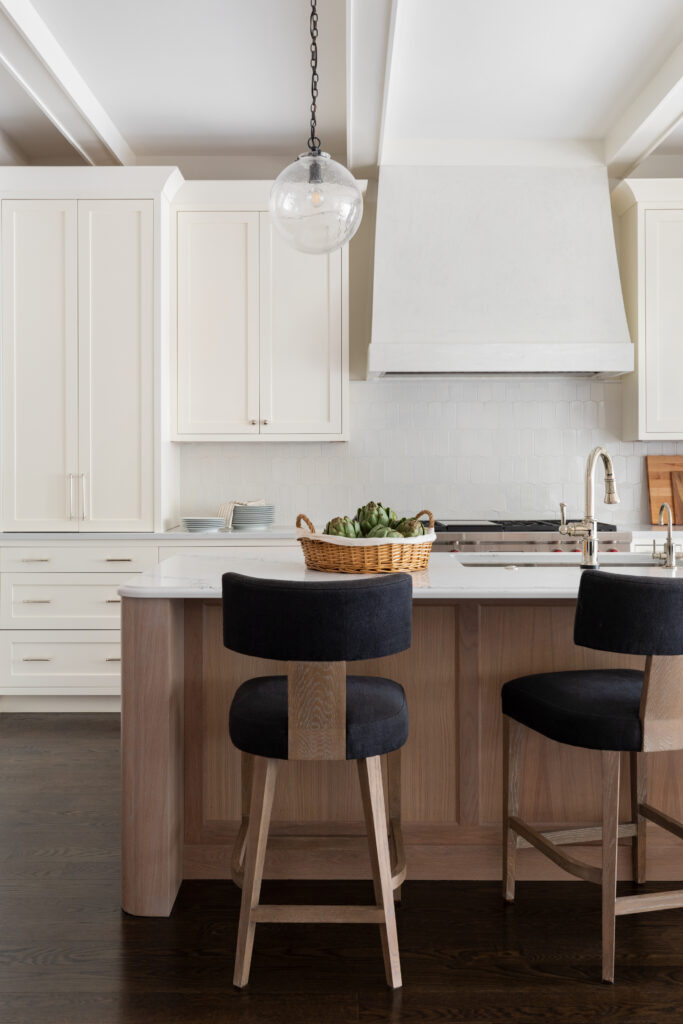
Thinking About a Custom Range Hood?
Centered by Design offers custom hood design for homeowners looking to add a unique feature to their kitchen. Contact us today and tell us about your kitchen renovation plans. We’d love to help you design the kitchen of your dreams.
